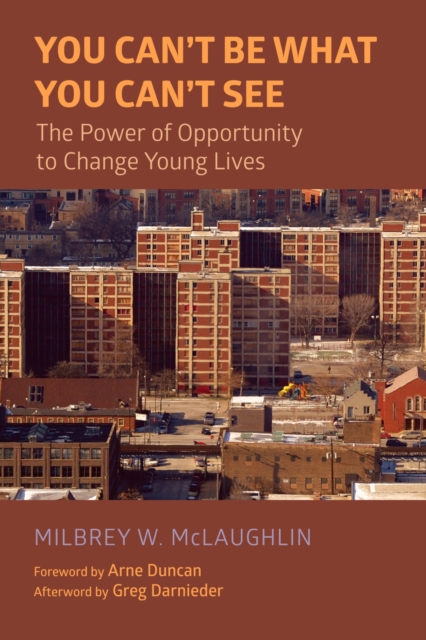
You Can’t Be What You Can’t See : The Power of Opportunity to Change Young Lives Paperback / softback
by Milbrey W. McLaughlin, Arne Duncan, Greg Darnieder
Paperback / softback
Description
You Can’t Be What You Can’t See presents a rare longitudinal account of the benefits of a high-quality, out-of-school program on the life trajectories of hundreds of poor, African American youth who grew up in Chicago’s notorious Cabrini-Green housing project in the 1980s and early ’90s. The result of a five-year research project by Stanford scholar Milbrey W.
McLaughlin, the book documents what happened to more than 700 Cabrini-Green youth two decades after they attended the Community Youth Creative Learning Experience (CYCLE), a comprehensive after-school program offering tutoring, enrichment, scholarships, summer camps, and more.
Through data collection, and in-depth interviews with participants and staff, she finds that almost all had graduated high school and escaped poverty, and so had their children. McLaughlin describes the design principles as well as the core features of the program that participants say were key to their success: mentoring, exposure to activities and resources beyond their neighborhood, and a culture of belonging in which staff committed to “never give up on a kid.” The recollections and accomplishments of CYCLE alums, McLaughlin argues, challenge current assumptions about the enduring effects of poverty and highlight the power of opportunity “to imagine and take a different path.”You Can’t Be What You Can’t See offers lessons for policy makers, educators, community activists, funders, and others interested in learning what makes a youth organization effective for low-income, marginalized children.
Information
-
Available to Order - This title is available to order, with delivery expected within 2 weeks
- Format:Paperback / softback
- Pages:280 pages
- Publisher:Harvard Educational Publishing Group
- Publication Date:30/04/2018
- Category:
- ISBN:9781682531525
Information
-
Available to Order - This title is available to order, with delivery expected within 2 weeks
- Format:Paperback / softback
- Pages:280 pages
- Publisher:Harvard Educational Publishing Group
- Publication Date:30/04/2018
- Category:
- ISBN:9781682531525






